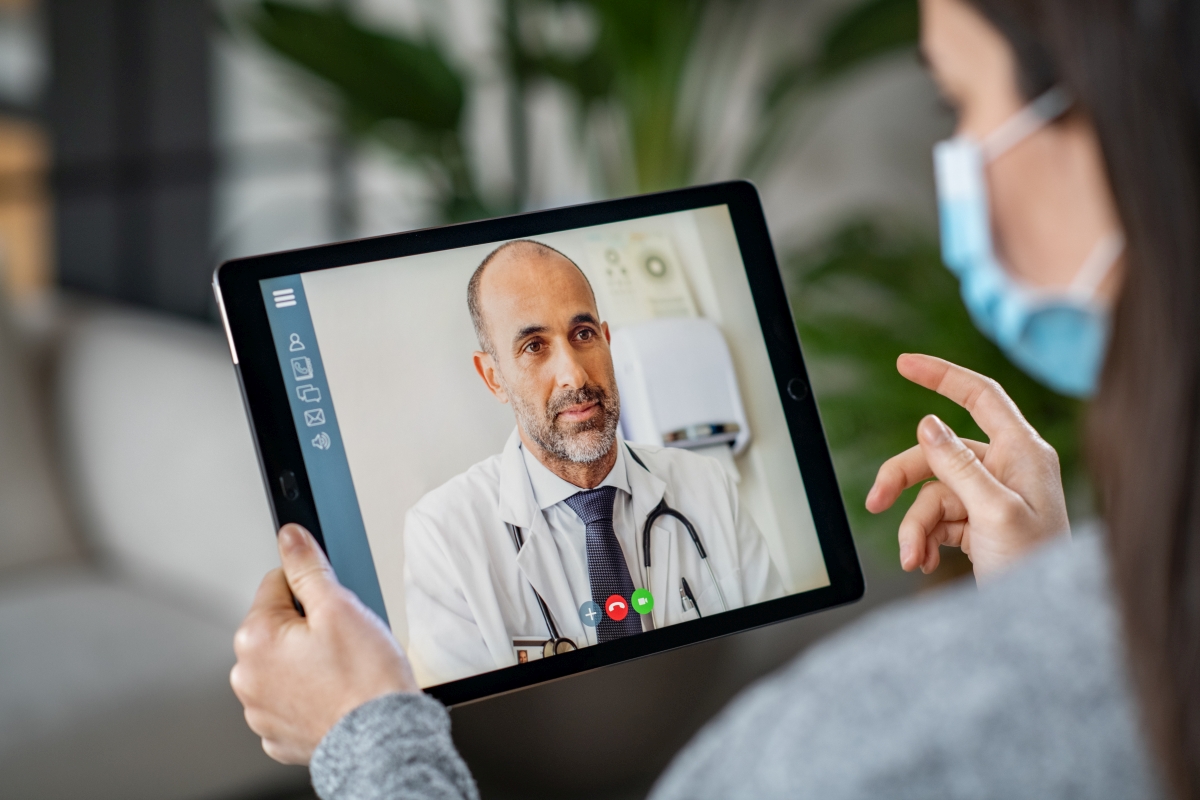Exactly How Teledoctors Are Reinventing Access to Medical Know-how Worldwide
In a period where digital technology penetrates every element of life, the world of health care is undergoing a transformative shift with teledoctors at the center. As they connect the void in between clients and medical specialists throughout varied locations, these online assessments hold the prospective to redefine traditional health care systems. The ramifications for underserved and remote neighborhoods are particularly extensive, providing unprecedented access to prompt medical competence. Yet, this evolution elevates intriguing concerns about the future landscape of medical care delivery, the obstacles that go along with such advancements, and the honest considerations that must be attended to. How will these components unfold?
Expanding Reach to Remote Locations
In current years, telemedicine has actually considerably expanded its scope, damaging down barriers to medical care accessibility in underserved and remote areas. This transformative change has been propelled by innovations in electronic technology, making it possible for health care suppliers to extend their reach past standard geographic restrictions. Telemedicine leverages telecommunications innovation to help with assessments, diagnoses, and even remote monitoring of individuals who may or else have minimal access to health care centers.
One of the main benefits of telemedicine in remote areas is its capacity to connect the void between clients and professionals (teledoctors). In locations where medical care infrastructure is sporadic, individuals can currently speak with a vast array of doctor without sustaining prolonged traveling. This not only saves time and resources yet also guarantees prompt clinical treatment, which can be important in taking care of persistent conditions or addressing acute medical worries
In addition, telemedicine encourages local medical care carriers by offering avenues for collaboration with experts. This improves the quality of care provided at the area degree and advertises an extra integrated strategy to person management. By harnessing technology, telemedicine is not only expanding clinical gain access to however likewise reshaping the health care landscape in remote areas, promoting a much more inclusive and equitable system.
Enhancing Person Convenience
Structure on the development right into remote areas, telemedicine likewise substantially boosts person comfort, using a seamless healthcare experience. By eliminating the need for physical travel, patients save both time and sources, especially helpful for those with wheelchair problems or requiring schedules. Telemedicine systems permit clients to speak with doctor from the convenience of their homes, minimizing tension connected with typical in-person brows through.
The flexibility of organizing is one more significant benefit. Clients can schedule appointments outside typical workplace hours, accommodating varied way of lives and lowering the need for pause work or college. This versatility is crucial for keeping normal medical care regimens, specifically for those handling persistent conditions calling for regular tracking.
In addition, telemedicine provides prompt access to expert appointments, which typically involve prolonged waiting durations. By connecting individuals directly to specialists, it relieves the delays that commonly come with referrals, therefore expediting diagnosis and therapy initiation. Such prompt interventions can result in far better health and wellness outcomes and individual complete satisfaction.
Personal privacy and discretion are maintained through secure electronic systems, making certain that clients feel comfy discussing delicate health problems. As a result, telemedicine not just widens gain access to however additionally improves the general person experience by prioritizing comfort and accessibility.

Improving Healthcare Effectiveness
Telemedicine is considerably boosting health care performance by maximizing and improving operations source appropriation. By enabling remote assessments, health care centers can reduce patient wait times and enhance the number of clients seen daily without congestion physical areas. This shift enables doctor to optimize their timetables and supply even more timely care, thereby enhancing individual results.
In addition, advice telemedicine promotes far better source monitoring by lessening the requirement for physical infrastructure and reallocating these sources in the direction of critical locations such as emergency situation services and inpatient treatment. teledoctors. Telemedicine platforms also enable smooth assimilation of digital health and wellness records, which enhances interaction in between health care professionals and ensures that client info is readily accessible, more minimizing delays in treatment
Additionally, telemedicine empowers medical care experts to collaborate extra successfully across geographical limits, causing more thorough care for patients. For circumstances, experts can offer real-time assessments to primary treatment companies, permitting quicker decision-making and minimizing unnecessary referrals. By leveraging modern technology to connect the void between clients and companies, telemedicine not only boosts the efficiency of health care distribution however also improves the high quality of care that patients receive. This improvement is vital in attending to the increasing demand for medical care services worldwide.
Reducing Health Care Expenses

In addition, telemedicine systems can decrease the burden on physical healthcare facilities. By taking care of non-urgent instances from another location, doctor can assign resources much more effectively, enabling for much better management of important situations that require in-person attention. This maximized source allowance can bring about Discover More Here a decline in functional costs, inevitably converting to reduce fees for patients.

Helping With Global Medical Collaboration
The arrival of telemedicine has opened up unprecedented methods for worldwide clinical collaboration, making it possible for health care specialists to link throughout borders easily. This technical advancement permits the smooth exchange of medical understanding, best methods, and innovative treatments, cultivating a collaborative environment that transcends geographical restrictions. Physicians and specialists can now speak with peers from different components of the globe, getting to varied perspectives and know-how that can improve person care and results.
Telemedicine systems give great post to read a virtual area where multidisciplinary teams can convene to go over intricate cases, share analysis understandings, and develop detailed treatment strategies. Such collaboration is especially useful in resolving unusual conditions and problems that call for specialized expertise not readily available in specific areas. By leveraging telemedicine, medical care institutions can develop international networks that assist in continual education and learning and training, guaranteeing that medical experts continue to be upgraded with the most up to date improvements.
In addition, telemedicine enhances collective study initiatives, permitting scholastic and professional scientists to conduct joint studies and trials without the constraints of physical proximity - teledoctors. This worldwide technique increases the rate of clinical exploration and the advancement of new therapies, eventually contributing to an extra reliable and interconnected worldwide healthcare system
Conclusion
The increase of teledoctors is transforming international medical care by breaking down geographical barriers, therefore broadening accessibility to medical knowledge. This technological improvement enhances person ease, enhances overall medical care effectiveness, and contributes to set you back reduction. Additionally, it cultivates global cooperation among doctor, helping with an international exchange of understanding. By ensuring equitable accessibility to medical sources for underserved populations, teledoctors play an essential duty in promoting health equity and improving the top quality of care worldwide.
Telemedicine leverages telecommunications innovation to facilitate examinations, diagnoses, and also remote surveillance of patients that might otherwise have restricted access to medical care facilities.
Building on the development right into remote locations, telemedicine additionally considerably boosts person benefit, supplying a seamless health care experience. By allowing remote appointments, healthcare centers can reduce individual wait times and enhance the number of individuals seen daily without overcrowding physical spaces.In addition, telemedicine encourages medical care experts to collaborate much more effectively across geographical limits, leading to even more detailed treatment for people. By leveraging technology to bridge the gap between service providers and patients, telemedicine not only increases the effectiveness of medical care delivery yet additionally enhances the high quality of care that patients receive.